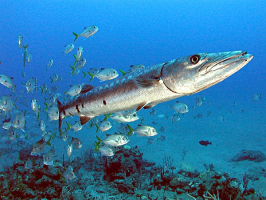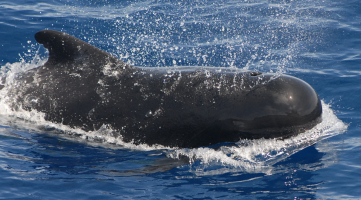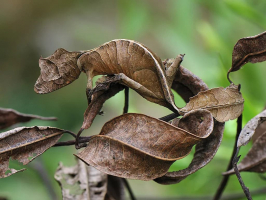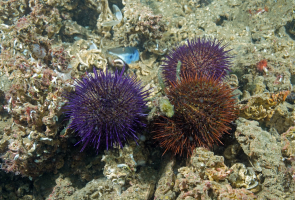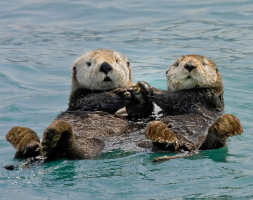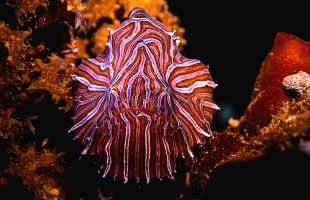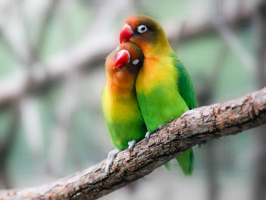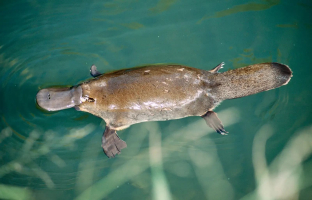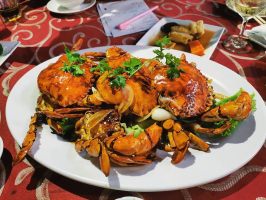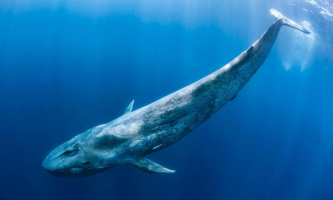Top 10 Strangest Sea Creatures
The ocean is home to an enormous variety of life forms that most of us will never fully comprehend. Although more than 226,000 of them have been recognized, ... read more...it's thought that there may be as many as 1 million different species down there. There are many lists of the strangest things on the internet, but they frequently repeat themselves and feature animals we've all seen before, like goblin sharks or gulper eels. Unusual, yes, but also well known. Fortunately, there are still tens of thousands more options available. Here are some Strangest Sea Creatures.
-
Giant conjures up certain expectations, and the ocean has a high bar to meet when discussing it. The largest animal to have ever lived, the blue whale, calls this place home. A huge siphonophore in the sea had better be something to behold if it exists. Fortunately, the moniker isn't just a smokescreen; this object actually is enormous. By no means is it as large as a blue whale, but it's still no lightweight.
In the sea, there are close to 200 different types of siphonophores, and explaining them in simple terms is difficult. As colonial organisms, they are first and foremost a collection of things rather than "a" thing. But not all of them are the same. Different components serve various purposes. There is a sort of "primary" portion, which you could describe as the head, and then there are other parts that develop on their own and can assist the entire organism with eating, swimming, digesting food, and other similar activities. Imagine it as a little bit like a deep sea Voltron, made up of numerous little components that are put together to form a useful whole.
Around, the enormous siphonophore is roughly the thickness of a broom handle. Not at all enormous. It can, however, also extend to a length of up to 130 feet. It only has to compete with the bootlace worm, which has been seen to grow a little longer, making it by far one of the longest organisms in the world. However, one that was spotted off the Australian coast was thought to be roughly 150 feet long.
The enormous siphonophore is fortunately pretty innocuous and feeds on little crustaceans and other creatures that are best characterized as gelatinous, which is fortunate for those of us who aren't giants. It attracts prey with bioluminescence and kills them with a toxin resembling that of jellyfish. Although that portion may seem dangerous, keep in mind that these are deep-sea monsters. In reality, they cannot exist close to the surface since the pressure at the surface will cause their bodies to rupture.Kingdom: Animalia
Phylum: Cnidaria
Class: Hydrozoa
Order: Siphonophorae
Family: Prayidae
Genus: Praya
Species: P. dubia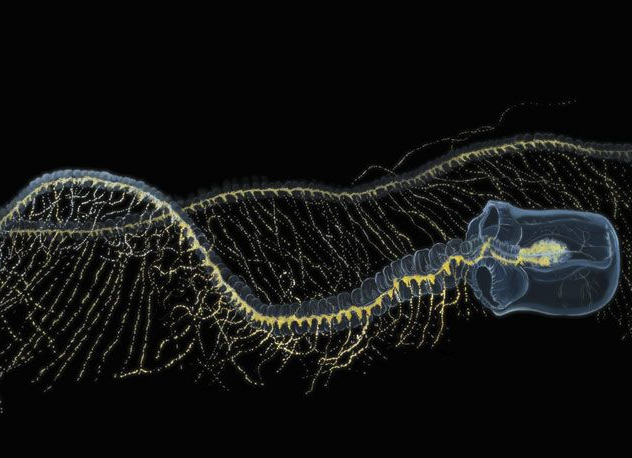
https://earth-chronicles.com/ Science Of Space channel on Youtube -
How do you compile a list of peculiar marine life and leave out the Pigbutt Worm, which has a real name? You can call it by its alternative term, "flying buttocks," if that sounds too impolite for you. The pigbutt worm, discovered in 2007, is a worm, but it's round, the size of a hazelnut, and yes, it resembles a flying butt. To complete the picture in your head, it floats around 3,000 to 4,000 feet below the surface, and their small mouths are covered with mucus.
This free-floating bum is unique among the worm species that are closely related to the pigbutt because nearly all of them dwell in tubes. They are said to float around in clouds of trash and minute pieces of bio-matter, eating whatever adheres to their mouth mucous.
The body of the worm is divided into segments, however the center segments are greatly inflated, giving the creature a rounded appearance. These morphological traits are specific to chaetopterids only. The specimens discovered so far have not been identified as adult or larval forms. It is likely that the individuals identified were actually larva that had simply been unable to settle in an adequate benthic habitat for their species, as chaetopterid worms do not spend a specified period of time as planktonic larva.
However, all currently known species of chaetopterid adults prefer to dwell in the benthic environment, and they do so by living in parchment-like tubes on the sea floor. Their remarkable size (five to ten times larger than any known chaetopterid larvae) would indicate they were adults. A phylogenetic tree made from the mitochondrial and ribosomal DNA sequences of twelve different Chaetopteridae worms revealed that they are most closely related to other worms of the genus Chaetopterus. Comparison of larval morphology has shown that the specimens have a close relationship to either genus Chaetopterus or genus Mesochaetopterus.
Kingdom: Animalia
Phylum: Annelida
Class: Polychaeta
Order: Canalipalpata
Family: Chaetopteridae
Genus: Chaetopterus
Species: C. pugaporcinus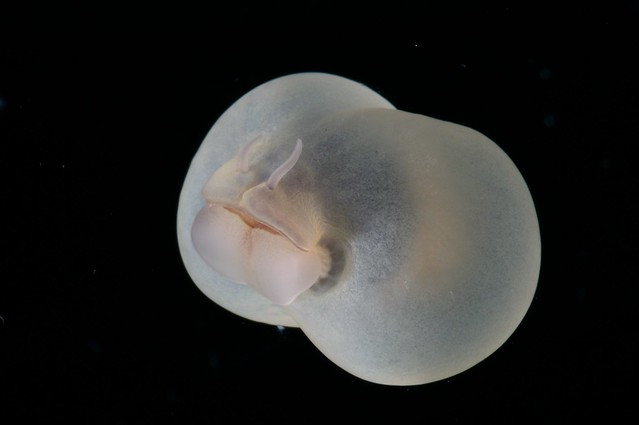
https://roaring.earth Ben G Thomas channel on Youtube -
A horrifying but thankfully little ocean parasite by the name of Phronima is thought to have served as the model for the alien queen from the film Aliens. That's a disturbing concept for any living being right away, but the phronima gets major points for being hideous in terms of both appearance and behavior.
With the exception of polar regions, the parasites are present practically everywhere on Earth in the oceans. Phrenima swim through open seas as opposed to waiting for food to locate them on the ocean floor like other, closely related species. This is due to the fact that they are looking for a ride.
Phronima seek out other creatures known as salps with their sharp yet small claws. A salp is a tunicate with a barrel-like form that resembles a little, living piece of Jell-O. A phronima will pursue a salp, use its claws to hollow out the interior, and then enter the structure.
Now that they are safe inside of their improvised living vessel, the phronima are able to travel the seven seas while consuming food, drinking, and procreating. Despite being hollowed out, the salp, which is an odd living form to begin with, manages to avoid dying completely. Since the exterior cells continue to function, the entire salp boat structure keeps its shape and safeguards the phronima inside.
The narrative appears to be entirely anecdotal as far as the connection to Alien is concerned. However, there are some convincing side-by-side images that imply the alien queen—rather than the original extraterrestrial created by HR Giger—may have drawn inspiration from the smaller monster.Kingdom: Animalia
Phylum: Arthropoda
Subphylum: Crustacea
Class: Malacostraca
Superorder: Peracarida
Order: Amphipoda
Suborder: Hyperiidea
Family: Phronimidae
Genus: Phronima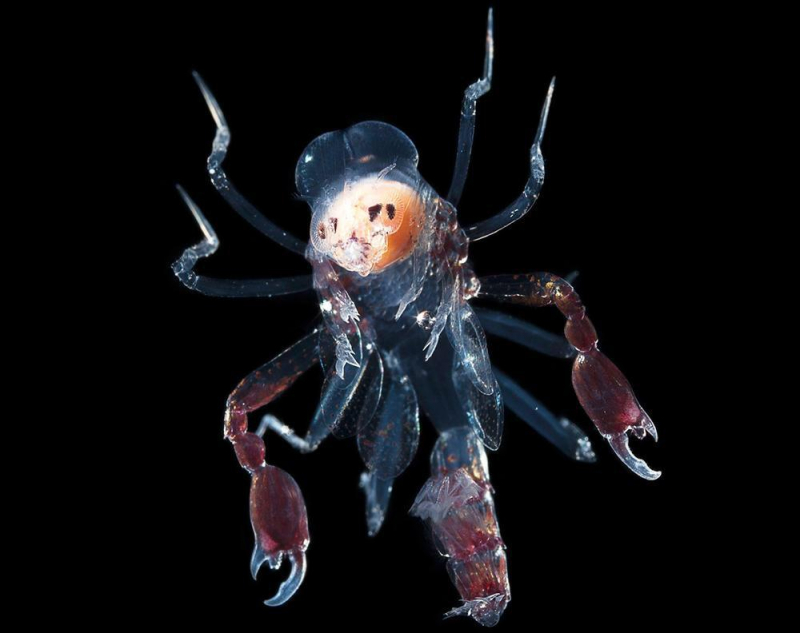
https://www.reddit.com/ Sharif Mirshak channel on Youtube -
Everyone in the scientific community enjoys discovering new species, but those of us with only a passing interest in animals typically only learn about it through others. However, the discovery of the stubby squid, which was made by scientists aboard the E/V Nautilus in 2016, can be seen in action on film. And this may be the only instance in recorded history where the discovery of a new species was greeted by laughing from all parties involved because the animal was so comical-looking.
The crew can be heard speculating about what the tiny creature might be before laughing as they zoom in and point out that it appears to have googly eyes. The tiny organisms range in size from 0.3 to 3 inches, which emphasizes how odd the eyes appear because they are so huge in comparison to the rest of the body.
Sephiolids are sea creatures that inhabit the shallow coastal waters of the Pacific Ocean, some areas of the Indian Ocean, the Atlantic Ocean, and the west coast of the Cape Peninsula off South Africa. They can swim by either using the fins on their mantle or by jet propulsion, just like cuttlefish. Due to their spherical mantle, they are sometimes known as "dumpling squid" or "stubby squid."
Kingdom: Animalia
Phylum: Mollusca
Class: Cephalopoda
Superorder: Decapodiformes
Order: Sepiolida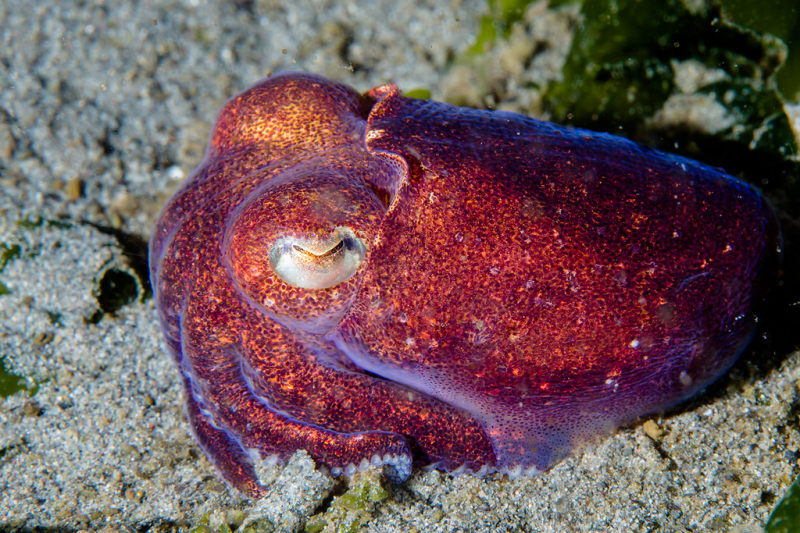
https://www.flickr.com EVNautilus channel on Youtube -
Animal colonies or hives are a pretty popular concept up here on the surface. One queen appears to rule the roost in the colonies of ants, bees, termites, and many other types of insects. Eusociality, as it's named, has only been seen in one marine species, a shrimp called Synalpheus regalis. The name "regalis" for the species is from the Latin word regalis, which means "royal". This is probably due to the colonies' hierarchical structure, in which a single mother bears all of the young.
These small shrimp, which are available in many vibrant colors, inhabit coral and sponges. They are snapping shrimp, which means that they have one large claw and one small claw, giving them a menacing or amusing appearance depending on your point of view.
The shrimp have a queen, much like any good hive organization. Although colonies might have over 300 members, there is only one reproductive female each colony. Members of hives tend to the young, defend the colony from intruders, and collaborate to complete duties.
Kingdom: Animalia
Phylum: Arthropoda
Subphylum: Crustacea
Class: Malacostraca
Order: Decapoda
Infraorder: Caridea
Family: Alpheidae
Genus: Synalpheus
Species: S. regalis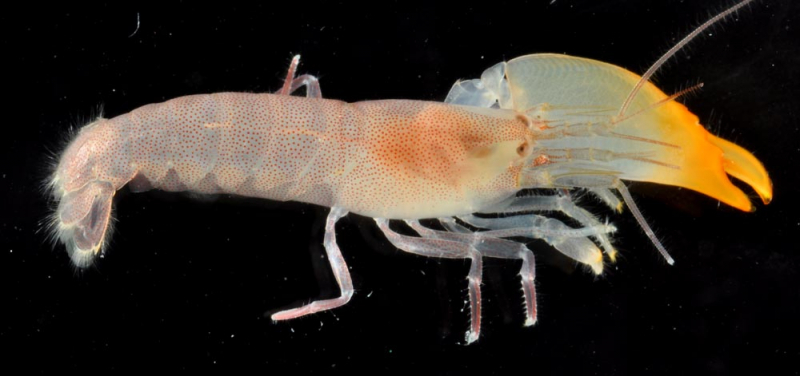
https://animaltheory.blogspot.com Coleman Earner channel on Youtube -
The deep sea osedax, often known as the zombie worm, drills through whale bones despite having neither mouth nor anus. For anything that lives on land, in the sea, or in the air, that is a very impressive resume. These mysterious worms wait for whale fall, which occurs when a whale dies and then drops to the bottom of the sea, despite not even having a digestive tract, let alone a mouth.
They then get hold of the body. They may dig directly into the bones because to the acid that their body secretes. Once within, symbiotic bacteria carry out an enzyme and fat breakdown process that the worms subsequently consume. Although it is not the simplest method, it serves their needs.
Lastly, keep in mind that the worms you can see are always female. As if that wasn't strange enough. Males remain in the larval stage throughout their whole lives, existing only to fertilize the female's eggs when the time comes. They do this by residing in a slime tube that surrounds the female.
Kingdom: Animalia
Phylum: Annelida
Class: Polychaeta
Family: Siboglinidae
Genus: Osedax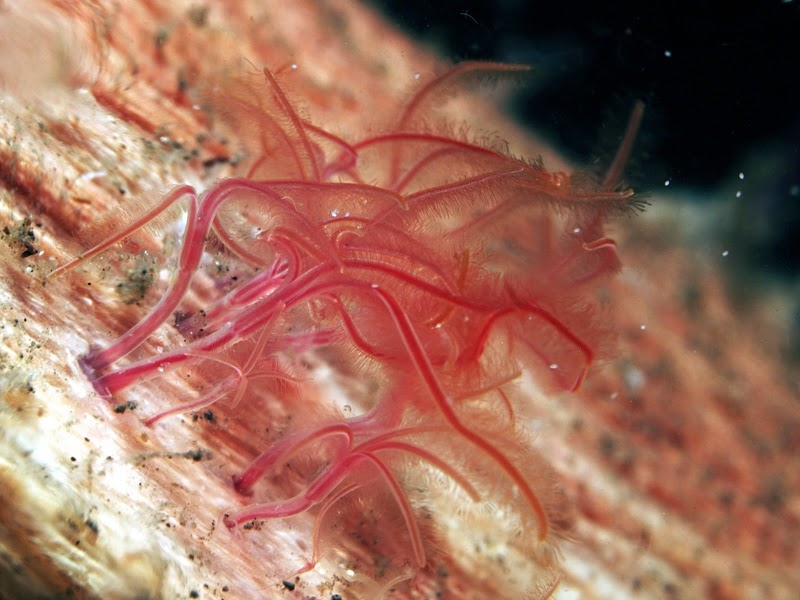
https://animaltheory.blogspot.com Animal Fact Files channel on Youtube -
Surprisingly, this strange creature isn't one of the recent, unusual finds. The earliest description of this animal, a tunicate, was made in 1782. Since it resembles a rock with intestines and blood inside of it, most people still find it to be as strange today as they did then.
The pyrua chilensi not only has a rock-like appearance, but it also behaves like one. It filters water since it is unable to move on its own and ingests bacteria while doing so. How does a rock monster that can't move reproduce? All of them are male when they are born, but as they get older, they turn into hermaphrodites and only reproduce with one another, sending sperm and eggs into the water until they collide, fertilize, and develop into new living rocks.
Despite their unsettling appearance, they are edible and can be cooked or eaten raw. Although the taste is characterized as "bitter," "iodine," and "soapy," enjoying it might be a stretch.Kingdom: Animalia
Phylum: Chordata
Subphylum: Tunicata
Class: Ascidiacea
Order: Stolidobranchia
Family: Pyuridae
Genus: Pyura
Species: P. chilensis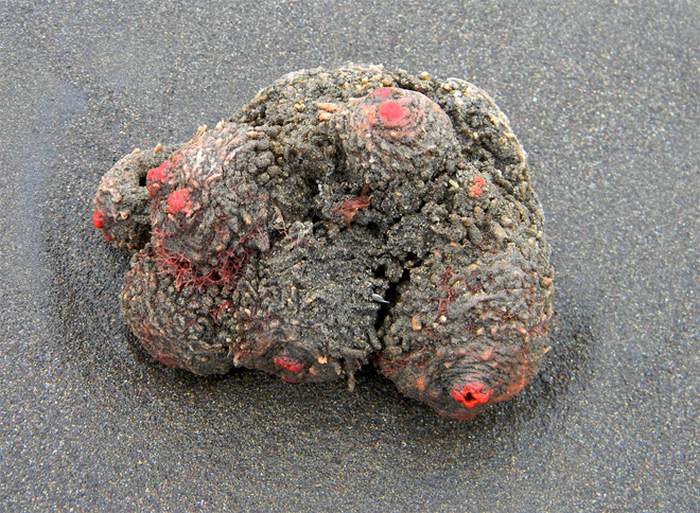
http://acidcow.com/ Animal Fact Files channel on Youtube -
You can be sure that this animal truly lives up to its name since there's no way an animal that managed to acquire the name "pink-see-through fantasia" is anything but strange. To be honest, you do have a choice because the scientific term for his deep sea cucumber is enypniastes, and some people also refer to it as the headless chicken fish.
The cucumber has transparent skin and emits bioluminescence to fend off predators. That makes sure that no matter what angle you're looking at it from, its mouth, stomach, and anus are all visible. Its length, which is only four to nine inches, is also rather short.
This beast is unlikely to be encountered during your own travels. Although they have a range of around 1,000 meters up and down through the water column, it hangs out at depths of around 2,500 meters. They swim with small webbed fins and feed sediment with the help of tiny tentacles.
Kingdom: Animalia
Phylum: Echinodermata
Class: Holothuroidea
Order: Elasipodida
Family: Pelagothuriidae
Genus: Enypniastes
Species: E. eximia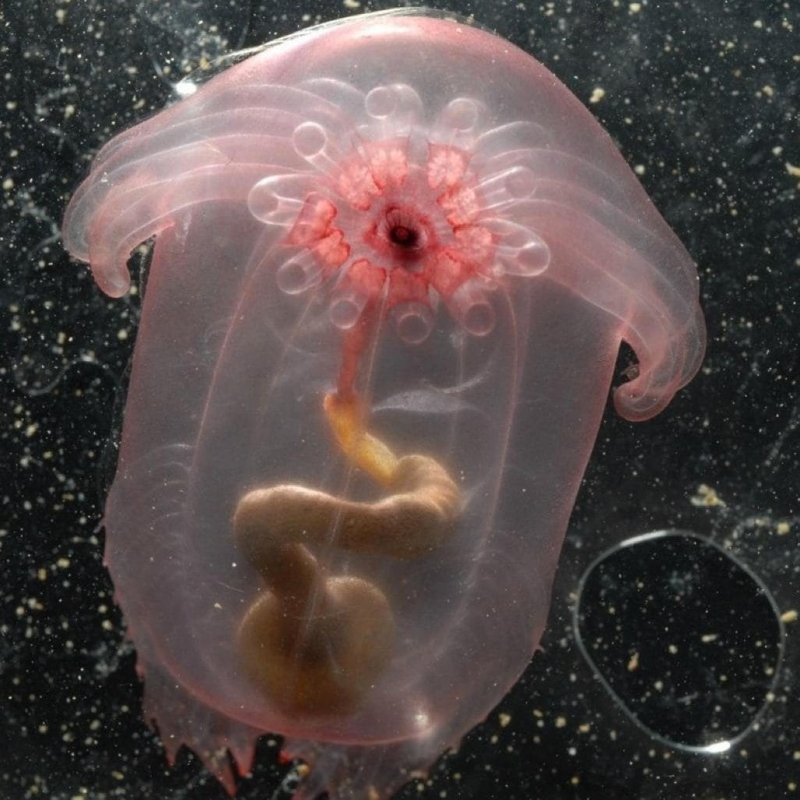
https://www.telegraph.co.uk/ Doctor Norman channel on Youtube -
Because the environment is as strange as it gets on our planet, deep sea life is always fascinating. The animals that exist beyond the limits of light and pressure that would crush us to smithereens are frequently amazing and strange in our sight. The Mariana Snailfish, which they believe to be the deepest living fish of all, has also been found by experts.
If you can descend 26,000 feet into the Mariana Trench, the deepest region of the ocean, you can view these fish for yourself. They have translucent skin, no scales, and a maximum length of less than a foot. They appear to eat small crustaceans that also live at depth, which is to be expected given that there aren't many predators down there.
The typical length of this pale, tadpole-like fish is 28.8 cm (11.3 in), and its weight is 160 g (0.35 lb). It seems to be the main predator in some areas of the Mariana Trench, consuming microscopic crustaceans in a habitat of deep water with few other larger predators. Pseudoliparis swirei are widespread in their habitat in the deep water, and they lay quite large eggs with a diameter of almost 1 cm (0.4 in).Kingdom: Animalia
Phylum: Chordata
Class: Actinopterygii
Order: Scorpaeniformes
Family: Liparidae
Genus: Pseudoliparis
Species: P. swirei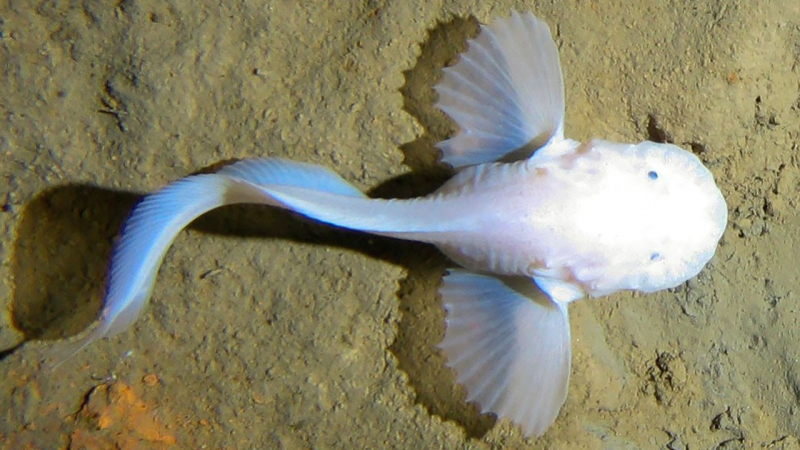
http://www.slate.com Caladan Oceanic channel on Youtube -
Nobody will ever say that the name Duobrachium sparksae is simple to say or remember, but until someone comes up with a better one, that's all we have. It is a type of comb jelly that was just recently found in the waters off Puerto Rico in 2015.
The tiny creature, which resembles a kind of living bubble, survives in extremely deep waters at a depth of roughly 3,900 meters. The lengthy tendril-like appendages that hang off of it, according to scientists, give it the appearance of a hot air balloon. It resembles a box when viewed from the tentacle side. Actually, there are two arms that the central blob may project considerably longer tentacles from. The creature's 12 to 22-inch-long retractable tentacles anchor it to the ocean floor and aid in controlling its location.
When viewed from the tentacular plane, the animal seems round, but when viewed from the perpendicular plane, it appears rectangular. It has two long tentacle arms that stretch downward from the center of the sides of the body. These are roughly one-third the length of the body. These arms have retractable tentacles that are between 12 and 22 inches (30 to 56 centimeters) long. These help the animals stick to the ocean floor.
Kingdom: Animalia
Phylum: Ctenophora
Class: Tentaculata
Order: Cydippida
Genus: Duobrachium
Species: D. sparksae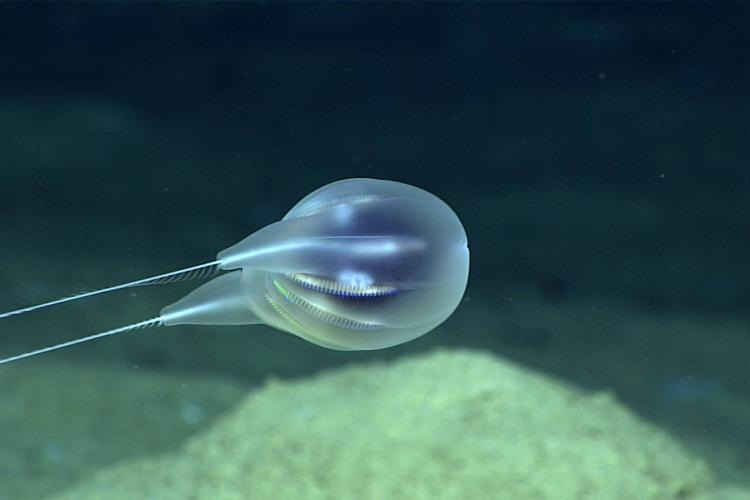
https://www.wired.it/ NOAA Fisheries channel on Youtube












